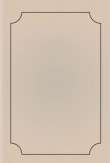قراءة كتاب A Budget of Paradoxes, Volume II
تنويه: تعرض هنا نبذة من اول ١٠ صفحات فقط من الكتاب الالكتروني، لقراءة الكتاب كاملا اضغط على الزر “اشتر الآن"
class="cenhead">THE MOON'S ROTATION.
Notes on the Kinematic Effects of Revolution and Rotation, with reference to the Motions of the Moon and of the earth. By Henry Perigal, Jun. Esq. London, 1846-1849, 8vo.
On the misuse of technical terms. Ambiguity of the terms Rotation and Revolution, owing to the double meaning improperly
attributed to each of the words. (No date nor place, but by Mr. Perigal,[42] I have no doubt, and containing letters of 1849 and 1850.)
The moon controversy. Facts v. Definitions. By H. P., Jun. London, 1856, 8vo. (pp. 4.)
Mr. Henry Perigal helped me twenty years ago with the diagrams, direct from the lathe to the wood, for the article "Trochoidal Curves," in the Penny Cyclopædia: these cuts add very greatly to the value of the article, which, indeed, could not have been made intelligible without them. He has had many years' experience, as an amateur turner, in combination of double and triple circular motions, and has published valuable diagrams in profusion. A person to whom the double circular motion is familiar in the lathe naturally looks upon one circle moving upon another as in simple motion, if the second circle be fixed to the revolving radius, so that one and the same point of the moving circle travels upon the fixed circle. Mr. Perigal commenced his attack upon the moon for moving about her axis, in the first of the tracts above, ten years before Mr. Jellinger Symons;[43] but he did not think it necessary to make it a subject for the Times newspaper. His familiarity with combined motions enabled him to handle his arguments much better than Mr. J. Symons could do: in fact, he is the clearest assailant of the lot which turned out with Mr. J. Symons. But he is as wrong as the rest. The assault is now, I suppose, abandoned, until it becomes epidemic again. This it will do: it is one of those fallacies which are very tempting. There was a dispute on the subject in 1748, between James Ferguson[44] and an anonymous opponent; and I think there have been others.
A poet appears in the field (July 19, 1863) who calls himself Cyclops, and writes four octavo pages. He makes a distinction between rotation and revolution; and his doctrines and phrases are so like those of Mr. Perigal that he is a follower at least. One of his arguments has so often been used that it is worth while to cite it:



